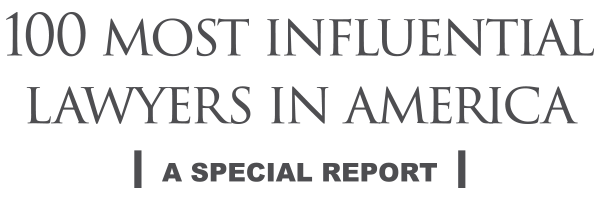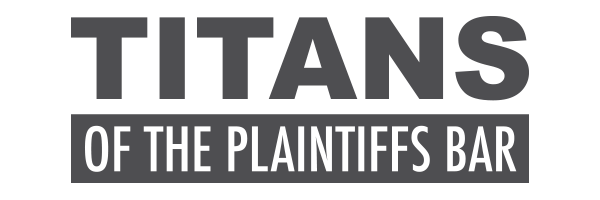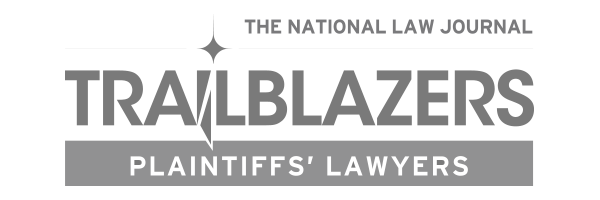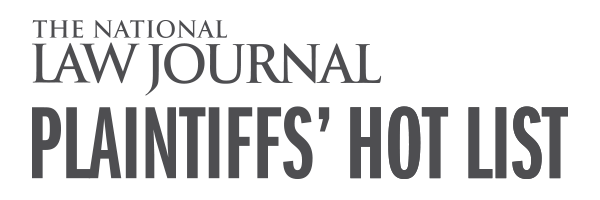NCAA NIL Settlement Frequently Asked Questions
Key Terms
NIL: Name, image and likeness. As it pertains to the lawsuit, attorneys say college athletes should legally receive compensation for the use of their NILs, and that if it weren't for the NCAA's restrictions, third parties would openly compete for access to college athletes' names, images and likenesses in sponsorships, promotions, social media content, advertisements and more.
Damages: Compensation sought for those bringing the lawsuit. As it pertains to the case, payments to compensate for the NCAA’s alleged violations of antitrust law by not allowing payment for athletes’ NIL use.
BNIL: Broadcast name, image and likeness. Use of an athletes’ name, image and likeness specifically in the area of broadcast media.
Videogame NIL: Use of an athletes’ name, image and likeness from videogame publishers.
Lost Opportunity NIL: Those class members whose schools submitted NIL deal data to plaintiffs during the litigation do not have to submit claims to receive a settlement payment.
Injunctive Relief: This portion of the settlement pertains to forward-facing relief, or changes to-come that will reshape the NCAA’s future.
Payments: How Much Can Athletes Expect To Be Paid From the Settlement?
- What classes of college athletes have been certified?
-
In 2023, a federal judge certified multiple classes in the litigation:
- Football and Men’s Basketball: All current and former college athletes who have received full GIA scholarships and compete on, or competed on, a Division I men’s basketball team or an FBS football team, at a college or university that is a member of one the Power Five Conferences (including Notre Dame), at any time between June 15, 2016 and the date of final judgment in this matter.
- Women’s Basketball: All current and former college athletes who have received full GIA scholarships and compete on, or competed on, a Division I women’s basketball team at a college or university that is a member of one the Power Five Conferences (including Notre Dame), at any time between June 15, 2016 and the date of final judgment in this matter.
- Additional Sports: Excluding members of the Football and Men’s Basketball Class and members of the Women’s Basketball Class, all current and former college athletes who competed on a Division I athletic team at any time from June 15, 2016 through the date of final judgment in this matter, including those who (i) have received a full or partial GIA; and/or (ii) received compensation for the use of their name, image, and likeness since July 1, 2021 while a college athlete if they competed in the same Division I sport prior to July 1, 2021.
- Which class members are expected to receive the biggest payout?
-
Based on the estimates of economic experts, football and men’s basketball class members who are seeking damages for use of their NILs in broadcast media will receive the highest average payments. The average approximate payment is expected to be $91,000. The estimated range is from $15,000 to $280,000. The variation in settlement payments for different individual class members depends on a number of factors, such as the conference a class member played in (some conferences have larger broadcasting agreements, so the settlement portion for athletes in those conferences will be higher), the sport the class member played (there are fewer basketball players than football players, so basketball players on average will receive more money per player), the years someone played (because broadcast agreements, in general, grew over the class period), and how many years a class member played (the more years someone played, the more in total they will likely receive).
Class members who played additional sports and seek claims for the use of their NIL related to lost opportunities average lower, but the range of value of these payments is estimated to reach $1,859,000. Attorneys estimate there are about 6,000 class members in this category of recovery, and payouts will depend on the sport and years played, among other factors.
- What is the average payout?
-
The estimated average payout varies based on the class and type of claimed damage. Some classes will receive average payouts of $91,000, which others will range in the hundreds to thousands of dollars. Other claimants may see payments that are lower, depending on the value of their claim. Across the three class-action cases, $1.976 billion will be allotted through House, $600 million for Carter and $200 million for Hubbard, plus additional ongoing forward payments.
- What is the largest class?
-
In total, the settlement will affect tens of thousands of NCAA college athletes. The largest class consists of those who played additional sports not included in the other subclasses, who have pay-for-play claims. This group comprises 390,000 estimated unique athletes.
Settlement Recovery Information By Class and Type of Claimed Damages
Class
Type of Claimed Damages
Estimated Number of Unique Athletes (approximate)
$ Value of Claims (rough estimates)
Football and Men’s Basketball
BNIL (no claim required)
19,000
Average approx. $91,000. Range from $15,000 to $280,000.
Football and Men’s Basketball
Videogame (no claim required)
18,000
Range from approx. $300 to $4,000 per athlete.
Football and Men’s Basketball
Lost Opportunities
3,000
Average approx. $17,000. Range from less than $1 to approx. $800,000.
Football and Men’s Basketball
Pay-for-play (no claim required)
14,000
Average approx. $40,000.
Women’s Basketball
BNIL (no claim required)
3,000
Average approx. $23,000. Range from $3,000 to $52,000.
Women’s Basketball
Lost Opportunities
400
Average approx. $8,500. Range from less than $1 to $300,000.
Women’s Basketball
Pay-for-Play (no claim required)
2,000
Average approx. $14,000.
Additional Sports
For FB/MBB players, Videogame (claim required)
26,000
Range from approx. $300 to $4,000.
Additional Sports
Pay-for-Play (claim required)
390,000
Average approx. $80 (see breakout by subcategories in chart below).
Additional Sports
Lost Opportunities
6,000
Average approx. $5,300. Range from less than $1 to $1,859,000.
Further Detail Regarding Pay-for-Play Settlement Recovery Information For Members of Additional Sports Class
Class
Damage
Subcategory
Estimated Number of Unique Athletes (approximate)
$ Value of Claims (rough average)
Additional Sports
Additional Compensation (claim required)
Power Five Baseball
3,500
Average approx. $400
Additional Sports
Additional Compensation (claim required)
Top Non-Power Five Football (AAC and Mountain West conferences plus BYU)
4,000
Average approx. $1,400
Additional Sports
Additional Compensation (claim required)
Big East Men’s Basketball
300
Average approx. $6,700
Additional Sports
Additional Compensation (claim required)
Top Non-Power Five Men’s Basketball (AAC, Atlantic 10, and Mountain West conferences plus Gonzaga)
1,000
Average approx. $2,400
Additional Sports
Additional Compensation (claim required)
Top Non-Power Five Women’s Basketball (AAC and Big East conferences plus Gonzaga
700
Average approx. $300
Additional Sports
Additional Compensation (claim required)
All Others
380,000
Average approx. $50
- What are the increases from prior scholarship limits in women’s sports?
-
Examples of Largest Increases From Prior Scholarship Limits in Women’s Sports
Sport
Prior limit
New limit
Increase
Rowing
20
68
48
Track
18
45
27
Lacrosse
12
38
26
Swimming
14
30
16
Water Polo
8
24
16
Field Hockey
12
27
15
Soccer
14
28
14
Softball
12
25
13
- What are the increases from prior scholarship limits in men’s sports?
-
Examples of Largest Increases From Prior Scholarship Limits in Men’s Sports
Sport
Prior limit
New limit
Increase
Lacrosse
12.6
48
35.4
Track
12.6
45
32.4
Swimming
9.9
30
20.1
Football
85
105
20
Soccer
9.9
28
18.1
Volleyball
4.5
18
13.5
- How does the settlement compare to those in other antitrust lawsuits?
-
The value of the new benefits and payments that can be provided to the college athletes under the settlement will grow each year, as college sports revenues increase. Over the 10-year settlement period, attorneys estimate that the total value of new payments and benefits that may be shared with college athletes will exceed $20 billion, making it one of the largest antitrust class-action settlements in history.
- Will the settlement follow Title IX?
-
Members of the Women’s Basketball Class will also receive Lost Opportunity NIL damages depending on when they played and the NIL deals they’ve made (up to as much as $300,000), as well as averages of $23,000 and $14,000 for their BNIL and athletic compensation claims, respectively.
- Were there any changes from conferences and NCAA officials?
-
The firms representing plaintiffs secured a final settlement that we believe makes no concessions to the NCAA for what college athletes rightfully deserve.
- What does the firm have to say to some coaches who say the proposed changes are too much, too quickly?
-
We’ve heard one coach describe these changes as "a decade’s worth of change in a matter of months." If coaches had read the writing on the wall, they would have seen this coming. Our firm is proud to have begun the fight for NCAA athletes 20 years ago.
- What changes will take place concerning roster limits?
-
The settlement agreement eliminates the NCAA’s existing limits on athletic scholarships, which restricted benefits that could be provided to athletes, and now permits (but does not mandate) schools to set roster limits. This change puts the NCAA in line with most professional sports leagues, which have roster limits. Additionally, the settlement makes clear that any new roster limits cannot function to eliminate scholarships.
- What are the effects of the proposed rule changes going forward and how will compensation under these new rules compare to professional sports?
-
Plaintiffs’ economic expert, Dr. Daniel Rascher, estimates that, in 2025-2026, the combined value of existing benefits to Division I athletes and the new 22% Pool benefits secured by the settlement’s injunctive relief will total 51% of Division I revenues—meaning college athletes will earn the same percentage of revenues as professional athletes in the NFL, NBA and other professional leagues.
- What’s next? What do college athletes need to know now?
-
The proposed settlement agreement includes a comprehensive notice program designed by an experienced administrator to help ensure all affected class members receive the information they need to know their rights in the lawsuit. The proposed notice program includes direct email or postcard notice and publication notice to more than 80% of potential class members. Notice of the settlement will also take place digitally via social media and online news media. The settlement administrator will maintain a case-specific website, www.collegeathletecompensation.com, to provide class members with access to information about the settlement.
- When are changes expected to take place?
-
If approved, athletes who are part of the class receive a notice about the terms with a choice to object to any terms. The proposed settlement outlines a comprehensive notice plan to notify affected college athletes which will begin in October, if approved. An exclusion and objection deadline would occur 105 days after the notice date, with a final approval hearing taking place 150 days following class notice. Class members would have a period of 135 days after they receive notice of the settlement to object or exclude themselves.
This timeline places the date of a finalized settlement likely in early 2025, according to attorneys, assuming the proposed settlement and timeline is approved and put into motion.
Class members may review estimated payment amount 60 days from the notice date at collegeathletecompensation.com and file a claim if it is required for their category of relief.
- What is the proposed schedule for notice and final approval?
-
Proposed Schedule for Notice and Final Approval
Event
Deadline
Final Approval Hearing
April 7, 2025
Notice Period Begins
October 18, 2024
Claims Period Begins
October 18, 2024
Allocation Estimates available
December 17, 2024
Claims Period Ends
January 31, 2025
Opt Out
January 31, 2025
Object by
January 31, 2025





